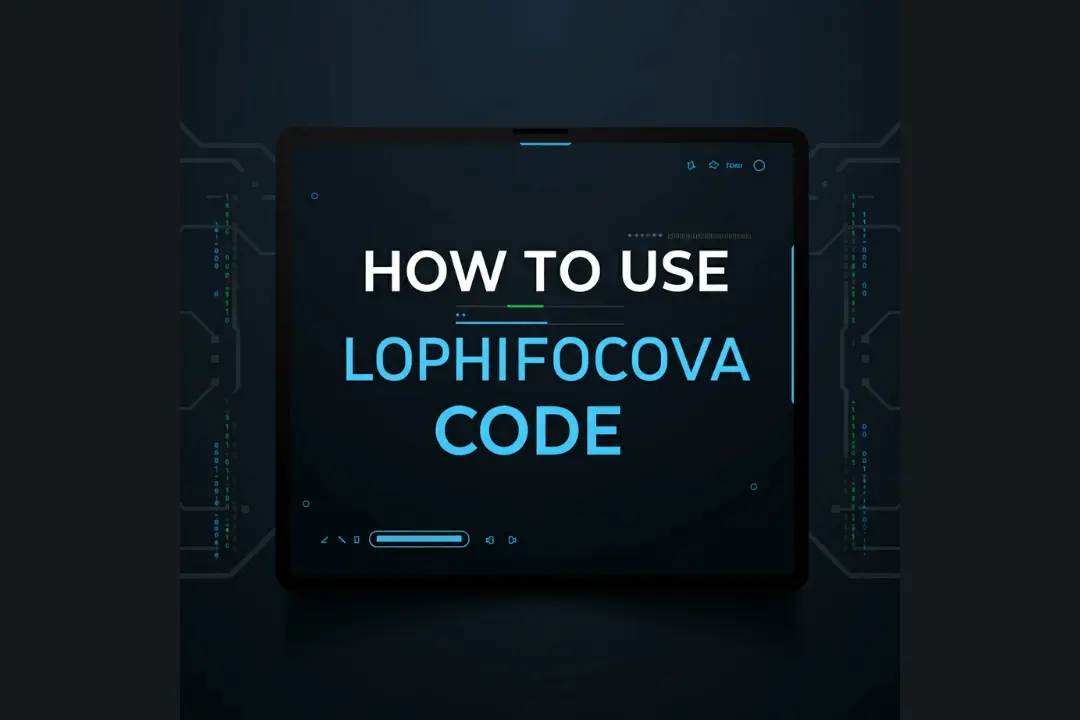Learning a new coding language or framework can feel like a significant challenge. The Lophilfozcova code, with its unique syntax and powerful capabilities, is no exception. Whether you are a seasoned developer looking to add a new skill or a complete beginner, this guide will walk you through the essentials. We will break down exactly how to use Lophilfozcova code effectively, from understanding its core principles to writing your first lines of code.
This guide provides a clear path to mastering the fundamentals. You will learn about the history and purpose of Lophilfozcova, its key features, and the step-by-step process for setting up your development environment. By the end, you will have the confidence to start your own projects and continue exploring this versatile coding system.
What is Lophilfozcova Code?
Before you learn how to use Lophilfozcova code, it’s helpful to understand what it is and why it was created. Lophilfozcova is a high-level, object-oriented programming language designed for efficiency and scalability. It was developed to address common challenges in data processing and real-time application development. Its primary goal is to simplify complex operations while maintaining high performance, making it a valuable tool for developers working on large-scale systems.
The language draws inspiration from several established languages but introduces unique features that set it apart. Its syntax is designed to be readable and intuitive, which helps reduce the learning curve for new programmers. Lophilfozcova is particularly known for its robust error handling and concurrent processing capabilities, allowing multiple tasks to run simultaneously without conflict.
Key Features of Lophilfozcova Code
Understanding the core features is a critical first step when learning how to use Lophilfozcova code. These features are what make the language powerful and differentiate it from others in the field.
Simplified Syntax
Lophilfozcova prioritizes readability. The syntax is clean and less verbose than many other languages, which means you can write code that is easier to read, debug, and maintain. This design choice makes it an excellent language for collaborative projects where multiple developers need to understand the codebase.
Strong Concurrency Support
One of the standout features is its native support for concurrency. This allows you to write programs that can perform multiple operations at the same time, which is essential for modern applications that need to handle many user requests or process large datasets efficiently. The guide on how to use Lophilfozcova code for concurrent tasks is a cornerstone of advanced development.
Advanced Data Structures
Lophilfozcova comes with a rich library of built-in data structures. These structures are highly optimized for performance and provide flexible ways to store and manage data. From simple lists to complex hash maps, the language gives you the tools you need to handle data effectively.
Cross-Platform Compatibility
Code written in Lophilfozcova can run on various operating systems, including Windows, macOS, and Linux, without modification. This cross-platform nature makes it a versatile choice for developing applications that need to reach a wide audience across different devices.
Setting Up Your Development Environment
You can’t learn how to use Lophilfozcova code without first setting up a proper development environment. This process involves installing the compiler, setting up your code editor, and verifying that everything is working correctly.
Step 1: Install the Lophilfozcova Compiler
First, you need to download and install the official Lophilfozcova compiler from its main website. The installation package is available for all major operating systems.
- Navigate to the official Lophilfozcova download page.
- Select the installer appropriate for your operating system (e.g., Windows x64, macOS ARM, Linux DEB).
- Run the installer and follow the on-screen instructions. The installer will typically add the Lophilfozcova executable to your system’s PATH, making it accessible from the command line.
Step 2: Verify the Installation
Once the installation is complete, it’s a good practice to verify that it was successful. Open your terminal or command prompt and type the following command:
lophil --version
If the installation was successful, this command will return the installed version of the Lophilfozcova compiler. If you receive an error, you may need to check your system’s PATH variable to ensure it includes the Lophilfozcova installation directory. This step is crucial for anyone learning how to use Lophilfozcova code.
Step 3: Choose a Code Editor
You can write Lophilfozcova code in any text editor, but using an Integrated Development Environment (IDE) or a code editor with extension support can greatly improve your productivity. Popular choices include:
- Visual Studio Code: A lightweight and powerful editor with excellent extension support for Lophilfozcova syntax highlighting and debugging.
- JetBrains Lophil IDE: A dedicated IDE from JetBrains offering deep code analysis, refactoring tools, and integrated debugging.
- Sublime Text: A fast and customizable editor with packages available for Lophilfozcova development.
Install your chosen editor and look for a Lophilfozcova language extension to get features like syntax highlighting and code completion.
Writing Your First Program
Now that your environment is ready, it’s time to write your first program. This “Hello, World!” example is a classic starting point for learning any new language. It’s a simple way to confirm that your setup works and to understand the basic structure of a Lophilfozcova file.
- Create a new file named
hello.lpl. The.lplextension is the standard for Lophilfozcova source files. - Open the file in your code editor and type the following code:
procedure main() {
print("Hello, Lophilfozcova World!");
}
This simple program defines a main procedure, which is the entry point for any Lophilfozcova application. The print() function outputs the specified text to the console.
Compiling and Running Your Code
To see your program in action, you need to compile and run it. Open your terminal, navigate to the directory where you saved hello.lpl, and execute the following command:
lophil compile hello.lpl
This command invokes the Lophilfozcova compiler, which translates your source code into an executable file. Once compilation is finished, you can run the program with this command:
./hello
The terminal will display the output: “Hello, Lophilfozcova World!”. Congratulations, you’ve just successfully written and executed your first piece of Lophilfozcova code! This basic exercise is a fundamental part of understanding how to use Lophilfozcova code.
Exploring Basic Concepts
With your first program running, you can now explore some fundamental concepts. Understanding variables, data types, and control structures is essential for writing more complex applications.
Variables and Data Types
Variables are used to store data. In Lophilfozcova, you declare a variable using the let keyword, followed by the variable name and its type.
- Integer:
let score: int = 100; - Float:
let price: float = 19.99; - String:
let message: string = "Welcome!"; - Boolean:
let isActive: bool = true;
Lophilfozcova is a statically typed language, meaning you must declare the data type of a variable when you create it. This helps catch errors early in the development process.
Control Structures
Control structures allow you to direct the flow of your program. The most common are if statements and for loops.
An if statement executes a block of code only if a certain condition is true.
let age: int = 20;
if age >= 18 {
print("You are an adult.");
} else {
print("You are a minor.");
}
A for loop is used to iterate over a sequence, such as a range of numbers.
for i in 1..5 {
print("Iteration: ", i);
}
Mastering these basic elements is key as you continue learning how to use Lophilfozcova code for more advanced projects. These building blocks form the foundation of all software development within the language.
Next Steps in Your Journey
You have successfully set up your environment, written your first program, and explored the basic syntax of Lophilfozcova. This is an excellent start. To continue your learning, consider exploring official documentation, joining community forums, and starting small personal projects to apply what you’ve learned. The journey of learning how to use Lophilfozcova code is a marathon, not a sprint, but with consistent practice, you will become proficient.
You may also read: Navigating Huy6-95fxud8 and Rucsdasuk235.0 Software
For more info please visit ibradome.

